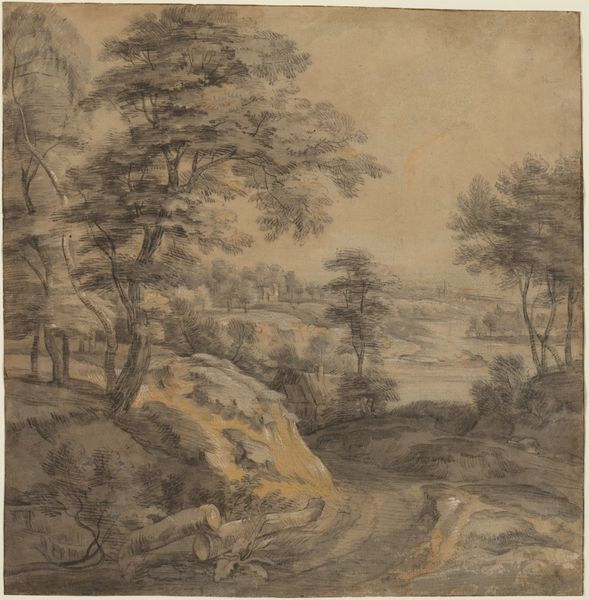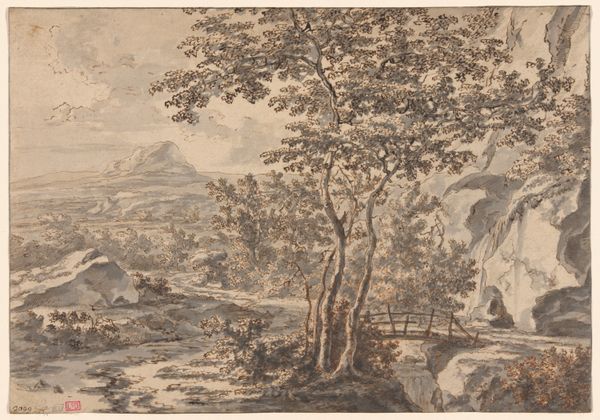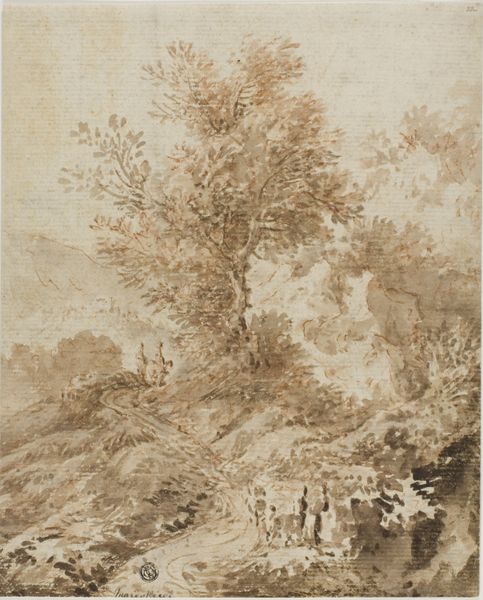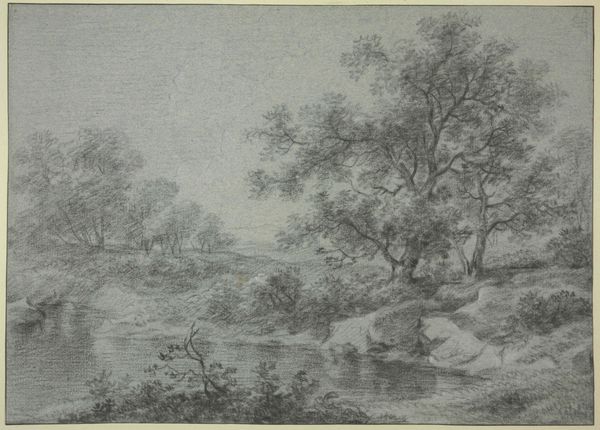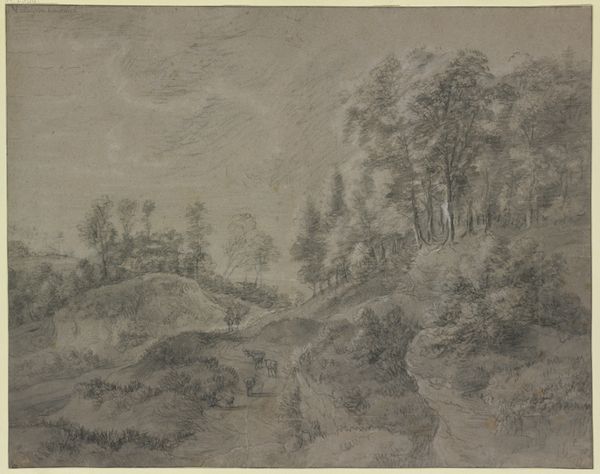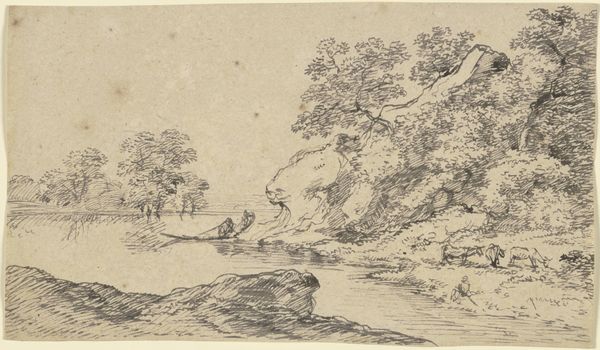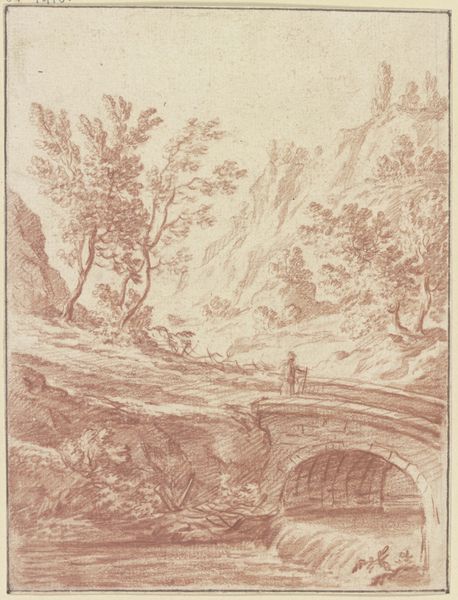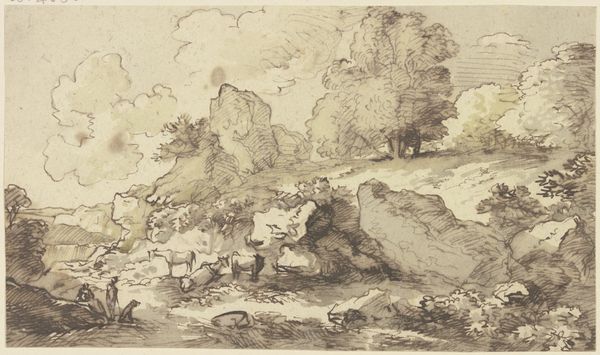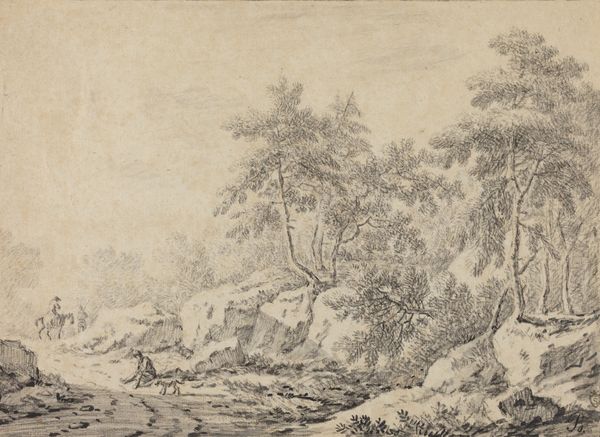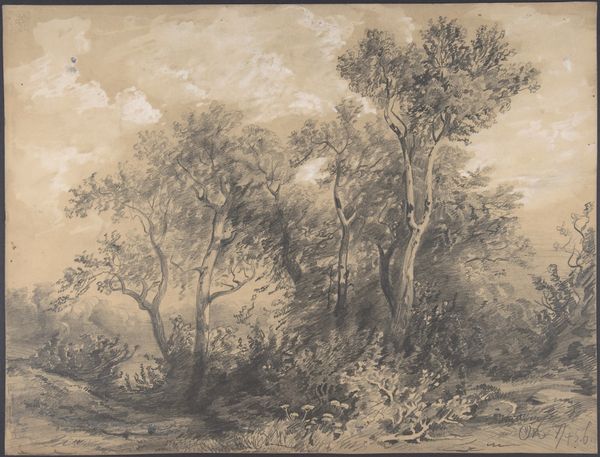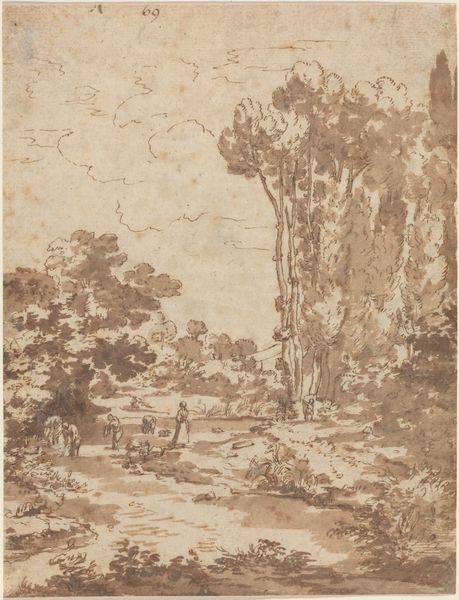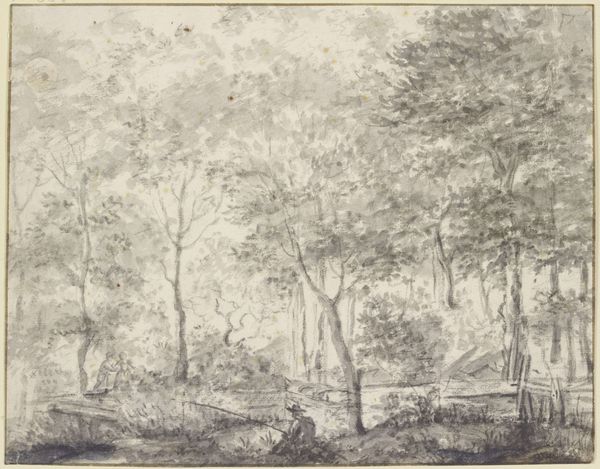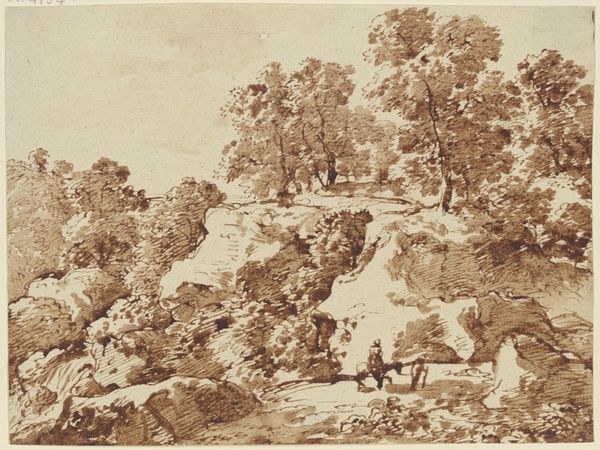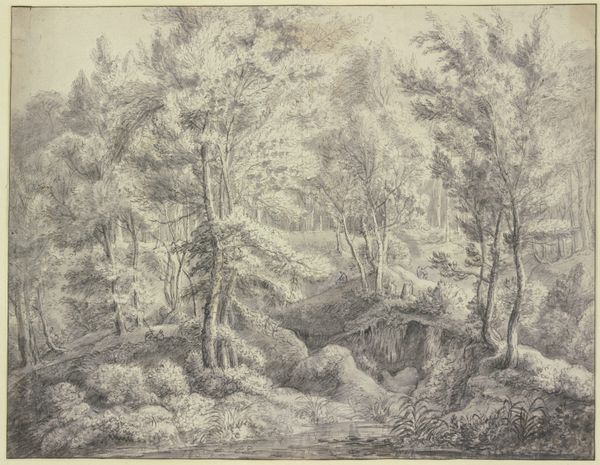
Waldbach, der über Felsen stürzt, über die eine Holzbrücke führt
drawing, paper, ink
drawing
baroque
ink painting
landscape
paper
form
ink
chiaroscuro
line
watercolor
monochrome
Copyright: Public Domain
Curator: Anthonie Waterloo's landscape, “Waldbach, der über Felsen stürzt, über die eine Holzbrücke führt," which translates to “Wood Brook Cascading over Rocks with a Wooden Bridge," invites contemplation on the interplay between nature and human construction. It’s rendered in ink on paper. Editor: It’s immediately striking—the monochromatic palette creates this sense of depth, drawing my eye towards the almost ethereal background. The wooden bridge, like a delicate spiderweb, contrasts beautifully against the raw, imposing rocks. Curator: That bridge becomes pivotal when thinking about it from a contemporary viewpoint. The artist gives form to our anxieties about humanity’s place within a broader ecological context. The bridge, built to overcome an obstacle, represents human determination, even domination, but is itself fragile and temporary. It questions how safe our intervention within landscape can be. Editor: And within the symbolic visual language of Baroque art, bridges signify transitions, passages. Consider that watery places often represent emotional or spiritual states, and wooden structures symbolize transformation. Waterloo’s composition depicts an ephemeral structure presiding over a more constant one. Perhaps a meditation on the fleeting nature of man versus the resilience of earth? Curator: It is intriguing to delve into how we historically represented such things, how the tension of temporality and permanence reflected not just landscape, but the structures within broader societal inequalities. I wonder how conscious Waterloo was of such things in the context of class, nature, and industrial progress. Editor: The contrast in texture, light and dark is striking—this really is about a delicate dialogue. Those light touches, suggestive rather than prescriptive. Like symbols are embedded in culture. So the waterfall that threatens to destabilize it, perhaps is more potent precisely due to the simple monochromatic forms of execution? It isn’t forceful, it offers subtle guidance, contemplation. Curator: It is amazing to note that in just a single drawing on paper with monochrome medium, Waterloo gives form to that very multifaceted debate! Editor: Precisely. By engaging with historical and cultural symbolism in Waterloo’s work, we deepen our modern perceptions and connect on emotional level to it as well.
Comments
No comments
Be the first to comment and join the conversation on the ultimate creative platform.
